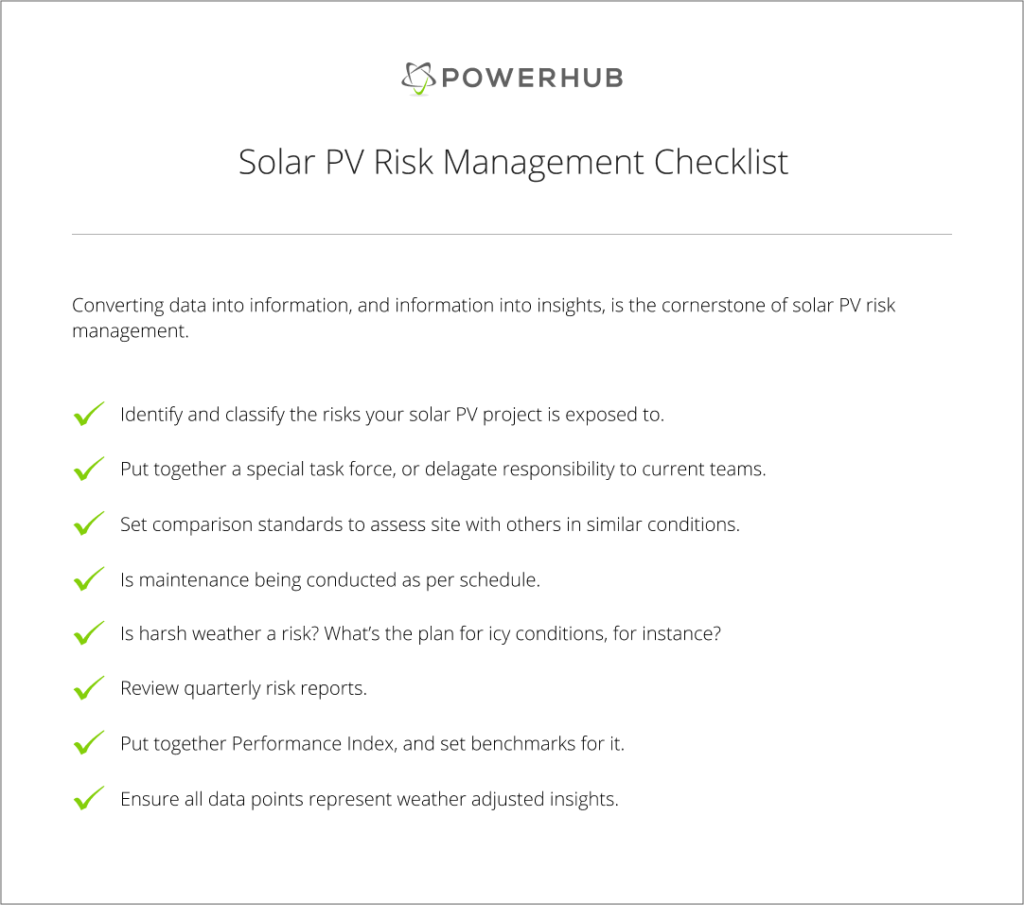Solar PV risk management is, no doubt, one of the biggest goals an asset manager works towards. With everyday tasks and responsibilities, a smart renewable assets manager aims to make projects and portfolios resilient.
And where does this journey to resilience begin? With data, of course. Therefore, a number of initiatives in the solar industry are working towards risk management. Their aim is to organize and utilize crucial data such that it can be turned into best practices. The Orange Button Data Standards is one such example.
Put together by the U.S. Department of Energy SunShot Initiative, Orange Button is a ‘taxonomy for solar data transfer and reporting.’ Using these standards, along with a dedicated solar asset management platform, information about renewable projects and portfolios can be exchanged freely between applications.
Such an integrated flow provides valuable insights into patterns, trends, and performance figures. Consequently, these can then be leveraged to make proactive asset management decisions. Thus, making solar PV risk management a calculated and informed study.
Managing Solar PV Risk – Let’s Check Off These Essentials
So, with that in place, let’s get you checkin’ off these essential solar PV risk management practices.





